I’m not trying to sound apocalyptic with that title. Growing food has been a way of life for centuries. Long before farmers markets and grocery stores, people grew produce. It was a part of day-to-day living.
Having enough food to sustain your family or household in times of need is security. If you’re like many gardeners, you may be planting food in your growing space to total capacity. Things like lettuce, tomatoes, carrots, and peppers are common garden staple crops. However, planning a survival garden, or as I like to call it, sustaining garden, requires a tad bit more consideration.
Why Plant a Sustaining Survival Garden?
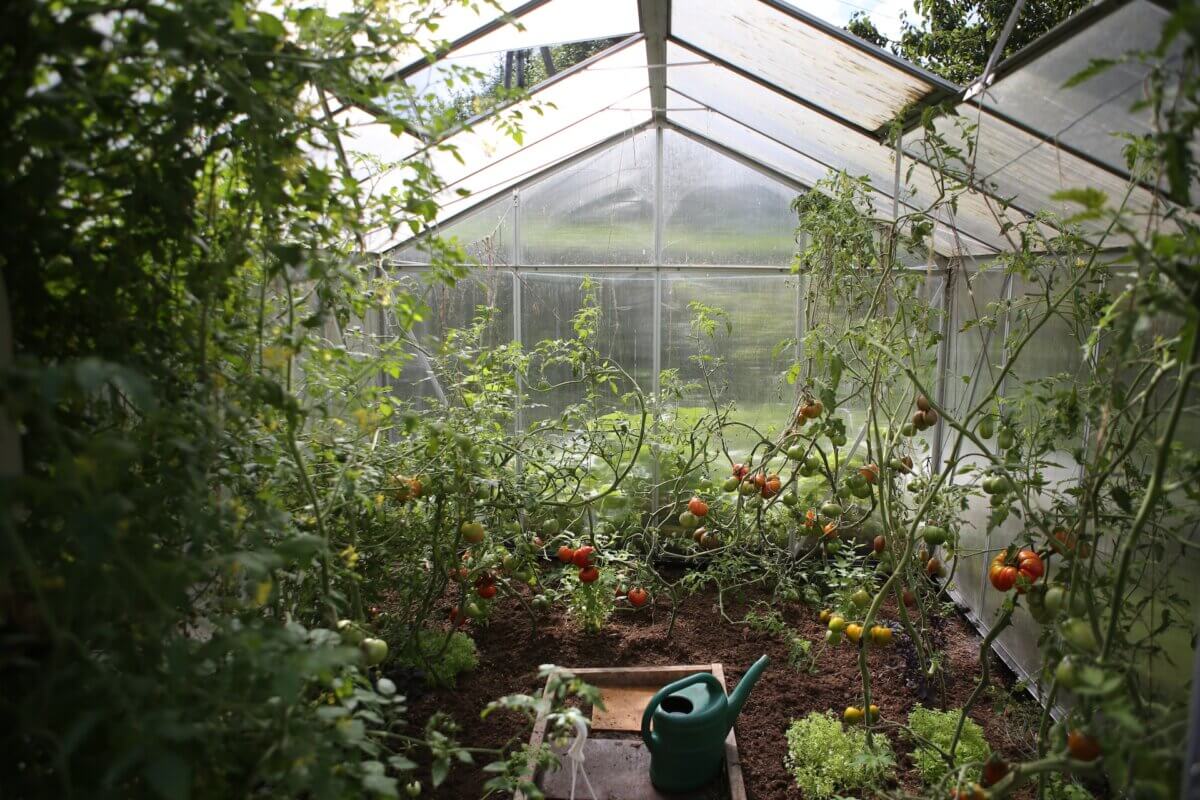
I think the better question is, why not plant a survival garden? There are various reasons why someone would consider survival gardening. One of the benefits of growing the produce it takes to feed your family is saving money. It means fewer trips to the market and less money spent, especially with the soaring inflation. Another added benefit is having a staple food supply you can turn to.
Knowing What Is in Our Food and Where It Comes From
Many people prefer to know exactly where their food is coming from. The amount of forever chemicals and pesticides used on factory-farmed or big-ag food is outrageous, which has more folks wanting to live a cleaner lifestyle, and that starts with what we consume. Those of us who are concerned, but don’t have the space or time to grow our own food, tend to shop locally with trustworthy farmers.
Limitations Lead to Movements
Consider, if you will, situations that force us to shelter in place. It seems the whole world has experienced something like this within the last few years. You might remember that “major event.” Many of us experienced sheltering in place, didn’t we?
That said, having a sustaining garden on your property will keep you and your family fed. If, by chance, you have yourself some ducks or chickens for eggs, and maybe a small goat for milk, you’ve already got somewhat of a head start that will sustain you for a while. External limitations can lead to necessary movements that keep life in motion.
If you grow sustaining or survival gardens, you can reap what you sow through the summer and fall. The amount of fresh produce one can generate is incredible. It can be such a bounty that preservation (canning) is necessary. Tomato and marinara sauces, pickles, salsa, and canned veggies can fill a pantry during the winter months. But even with a full pantry, we will likely need to supplement our diets with something more. We will need filling, hearty, and calorie-filled foods.
Even when we have a giant garden, if we’re forced to live off only what our garden produces, we can go hungry quickly. If we change how we think about gardening and make the right moves, however, we’ll be all set. Including starchy staple crops and high-calorie vegetables in a sustaining survival garden is key. Let’s talk about them.
What to Plant in Your Survival or Sustaining Gardens
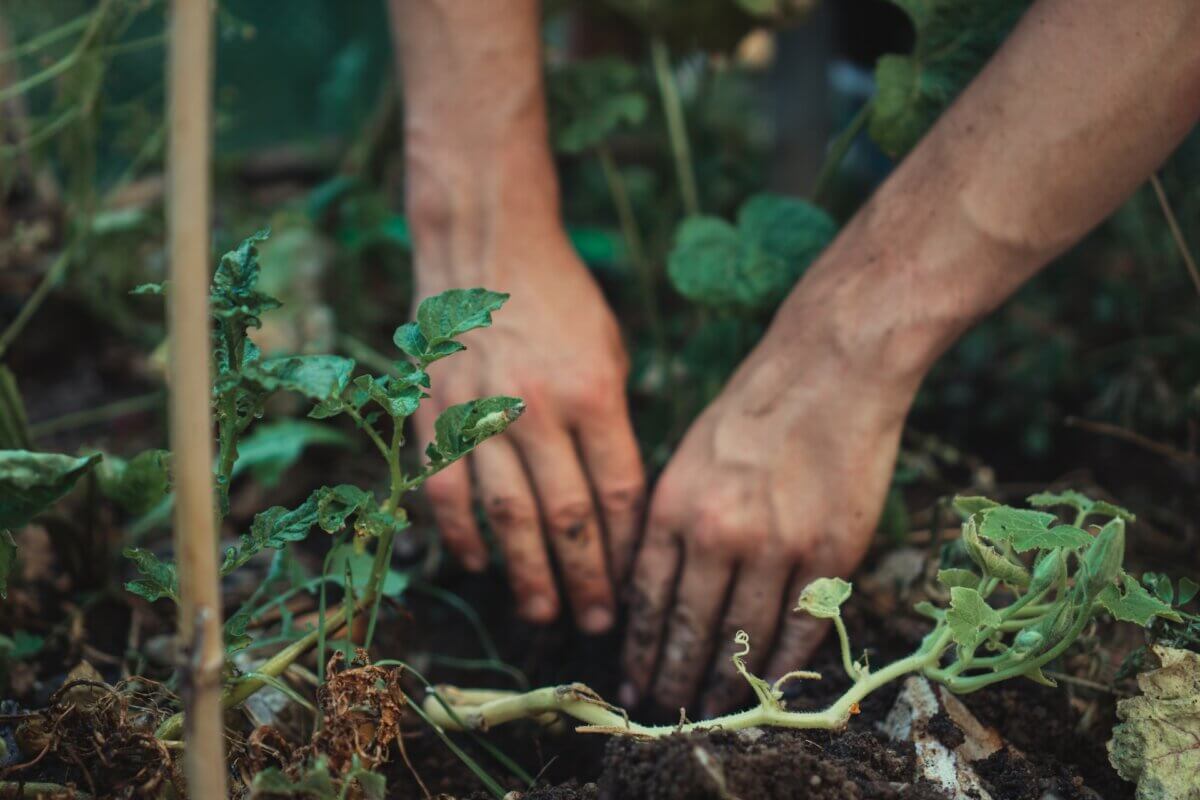
Adult humans require between 1,600 and 3,000 calories daily. Calories are essential for everyone; the more active a person is, the more calories they need. The types of crops you choose will play an important role. This is why choosing vegetable crops that are calorie-dense and nutritious goes a long way in providing sustenance. Side salads will not be enough, even if they fill our belly.
Potatoes
Potatoes are one of America’s staple crops and a favorite in many households. They’re easy to grow and do well in large containers. Once a potato plant is established, you can mindfully dig in and harvest tiny baby potatoes perfect for summer barbecues. When the plant’s leaves begin to die later in the season, it’s time to dig up the entire plant to get full-sized potatoes. Russet potatoes are ideal to include in a sustaining garden because they store well through winter.
About ⅔ cup of boiled potatoes with the skin on contains about 87 calories.
Sweet Potatoes
Sweet potatoes can be easy to grow in the right conditions. These high-calorie root vegetables will take up a reasonable amount of space since they vine across the ground (unlike regular potatoes that have a stalk that grows vertically). The vining sweet spuds require a lengthy growing season, but if you’re in an area where you get them in the ground early enough, it can be a success. This is true even in colder regions.
You will need a minimum of 90 days from the first to the last frost. Like regular potatoes, sweet potatoes store nicely for winter use.
One cup of baked sweet potatoes (skin on) averages about 180 calories. They contain a healthy dose of carbs and 4 grams of protein.
Corn
I find sweet corn is better eaten from the garden in season, and it doesn’t store well unless it is canned. While it’s an excellent option for in-season calories, ambitious gardeners might want to consider shelling corn for their gardens because it can be dried on the cob. Once the corn is dry, remove the kernels and grind it to make cornmeal for winter use. You can have the best of both worlds throughout the winter if you can get some of the harvest from sweet corn. Growing corn is ideal for any garden, especially one meant to sustain life.
An ear of corn has about 77 to 88 calories, depending on the size of the ear.
Beans
All sorts of beans are ideal to plant in a survival or sustaining garden. Green beans are a common garden staple and can be dried or canned for preservation. Cowpeas, black beans, kidney beans, pinto beans, and runner beans are excellent options, too. Not only are they filling, they are easy to dry and preserve for the long haul.
Different varieties of beans will contain various amounts of calories.
Fava Beans
Fava beans are from a completely different family than the common legumes we are familiar with, and they grow quite differently. These plants grow upright and are sturdy. The large pods the plants produce are full of flat beans, also called broad beans. This is a 2-for-1 plant because the tips of the plants are edible and can be enjoyed raw or cooked.
One cup of shelled fava beans averages about 187 calories.
Peas
Here, we have another legume that can be enjoyed fresh and green from the garden. We can harvest, dry, and store peas for the winter, and of course, canning is another preservation method. Depending on the variety of peas you grow, some can be eaten shell and all.
If you’re looking for a starchier vegetable with more calories, shelling peas is the way to go. These babies are grown until they’re nice and plump, and then the peas are removed from the shell. You can eat these fresh, dried, or canned from the pantry.
One cup of shelled peas has around 118 calories.
Pumpkin and Winter Squash
While pumpkins and winter squash aren’t quite as calorie-dense as the vegetables listed thus far, they’re easy-to-grow crops. They’re filling and can be used in many ways. One issue some folks have with squash plants is they take up a fair amount of space. They do produce generously and are good keepers for the most part.
One cup of cooked squash or pumpkin can contain around 50 to 80 calories, depending on the variety.
Grains
If you have the space and feel adventurous, you might consider trying your hand at growing some grains. While the art of growing grains isn’t difficult, the act of preparing them for the table requires a bit of extra effort. Threshing and removing the hulls of grains is a chore, but they can be prepared “as is” for cereals, and milled into flour for baking.
There are many grains to choose from, so you have numerous options.
This might be hard to believe, but wheat flour has nearly 500 calories per cup.
Other Options and Considerations
The more options we have, the better, am I right? Suppose you have a large family or plan on preserving massive amounts of food whenever possible. In that case, you might consider produce that grows large. Dill’s Atlantic Giant Pumpkins are massive.
Aside from large fruits and vegetables, finding varieties that are prolific producers is ideal because it increases the amount of produce we can harvest. Tomatoes, cucumbers, fruit trees, pole beans, carrots, lettuce, and kale all have naturally prolific varieties. Dual-yielding produce will produce double the amount of produce twice a year.
Self-seeding vegetables are excellent to have in survival and sustaining gardens. Garlic, onions, and leeks are a few of my favorites. Carrots, beets, radishes, kale, and mustard greens are other self-seeding plants. This means less work required from you, with more significant potential for food security.
Always consider the climate in your area. If you live somewhere that struggles with drought, high heat, freezing, etc., you will want to find plants that tolerate the conditions.
Storage
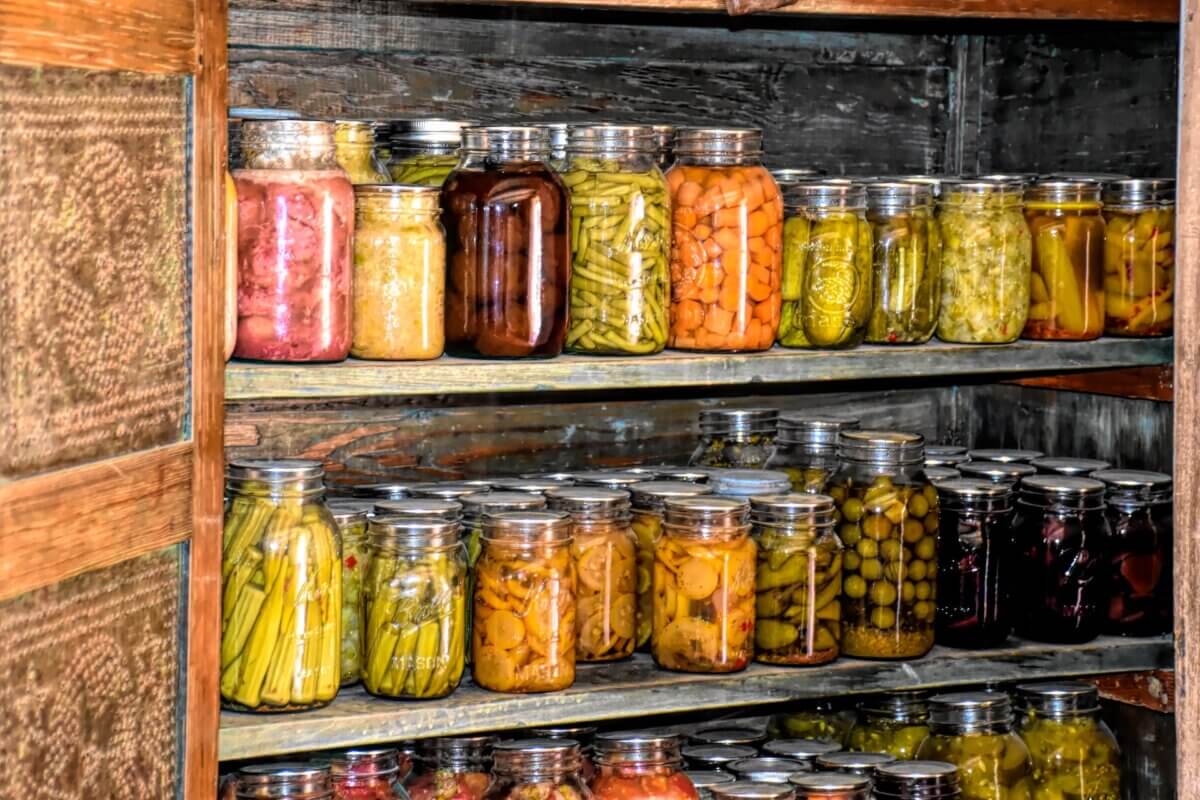
One of the benefits of some crops on this list is they can have an extended shelf-life when stored properly. For instance, winter squash, some pumpkin varieties, sweet potatoes, potatoes, and other root vegetables can be stored for months without much extra effort on your part. While a root cellar is a traditional way to keep these crops fresh over winter, many of them can be tucked away in any cold, dark place you have available. Drying your harvest of beans and peas extends the shelf-life, as does canning.
Preparedness with a sustainable food source is the best route to take, regardless of the situation. “An ounce of prevention is worth a pound of cure” is one of my favorite quotes from Mr. Ben Franklin.


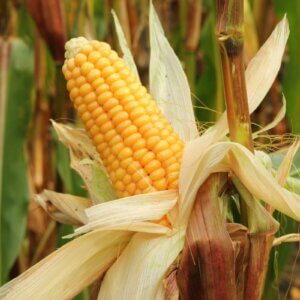
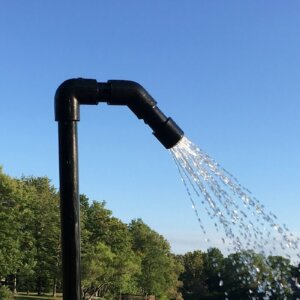


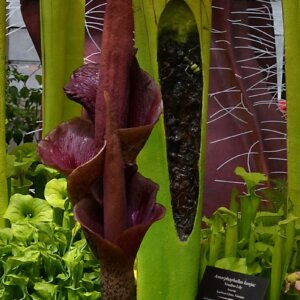



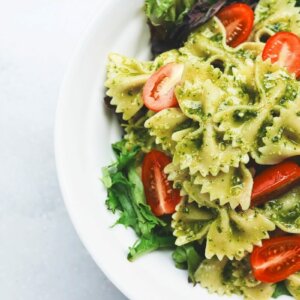

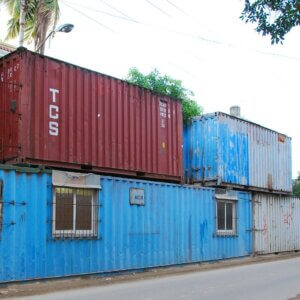
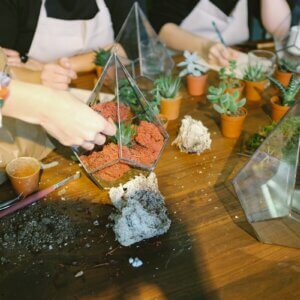


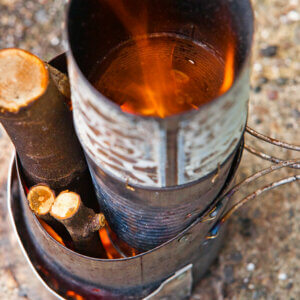


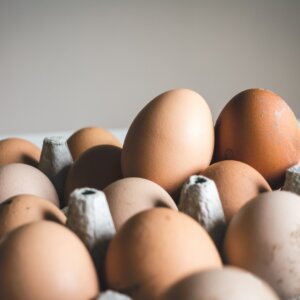

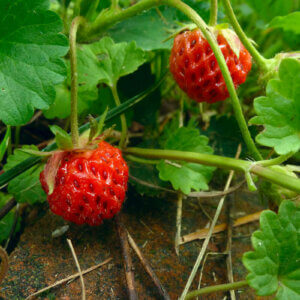
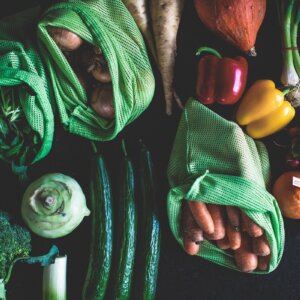

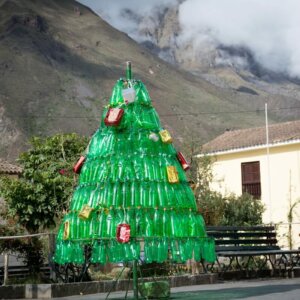

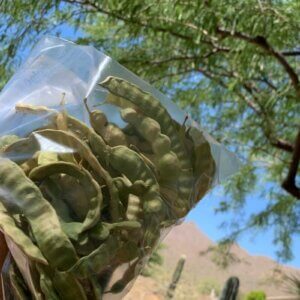
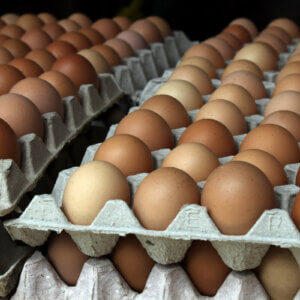
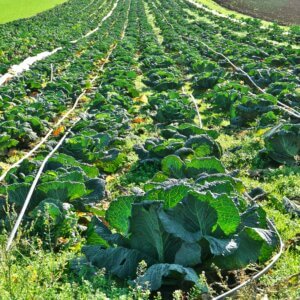


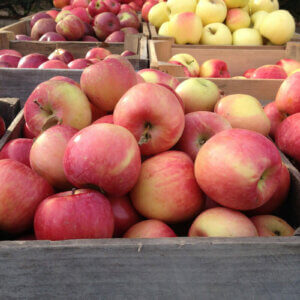
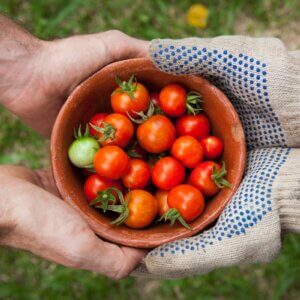


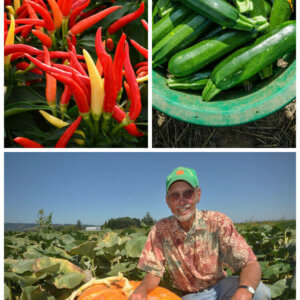

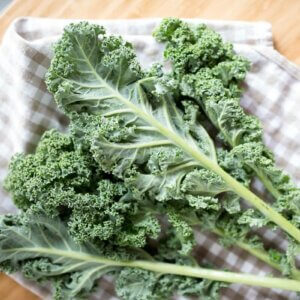
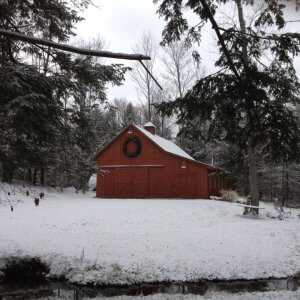


Happy to see many listed that are on mine and my son’s garden plans for this year! Thank you for the validation of our choices.